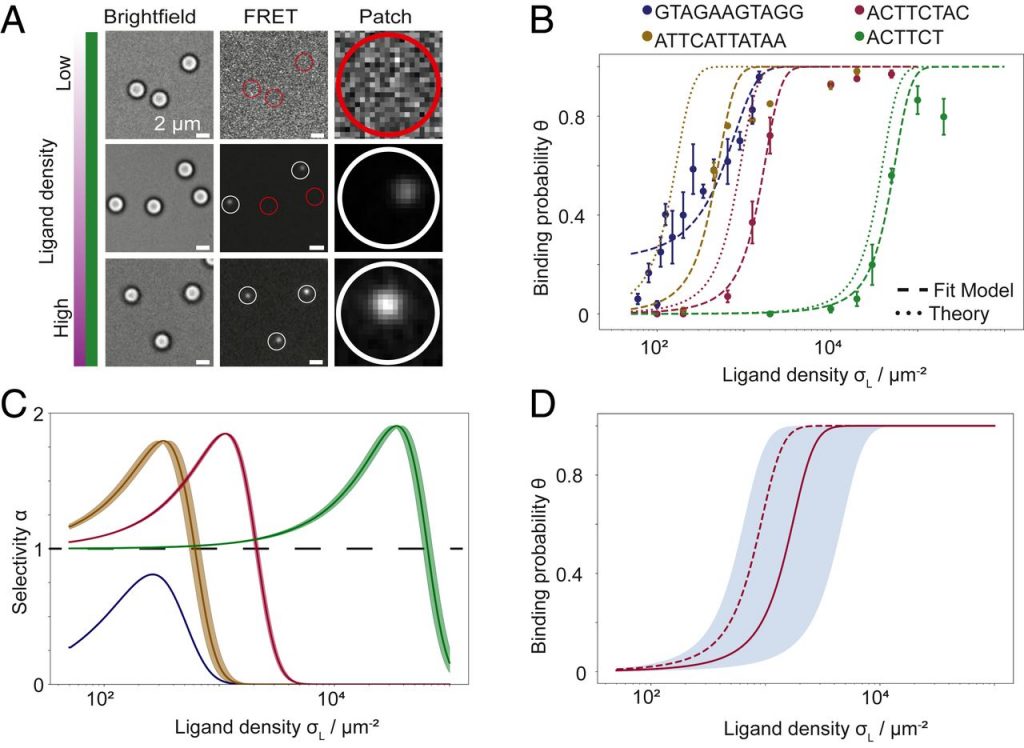Direct visualization of superselective colloid-surface binding mediated by multivalent interactions

From viruses to cells, many natural systems interacts via the formation of multiple and reversible bonds between ligand and receptors on their surface. One potential reason for this evolutionary choice is that multivalent interactions can display a phenomenon called super-selectivity, which in practice helps this system recognising the right binding partner among different ones based on the spatial distribution of receptors rather than their identity.
In this work, in collaboration with colleagues from the University of Leiden and the University of Utrecht (Netherlands) we combine theory and simulation with experiments to study a model multivalent system, colloids coated with DNA strands that can form bonds with their complementary sequence.
By studying both the thermodynamics and kinetics of the multivalent interactions, we show that for super-selectivity to occur the kinetics should be fast enough for the system to relax on the experimental timescale, confirming earlier theoretical suggestions and setting a limit to the type of ligand-receptor pairs that can be used to display super-selectivity.
Authors: Christine Linne, Daniele Visco, Stefano Angioletti-Uberti, Liedewij Laan, Daniela J. Kraft
Featured in: Proceedings of the National Academy of Sciences of the United States of America
